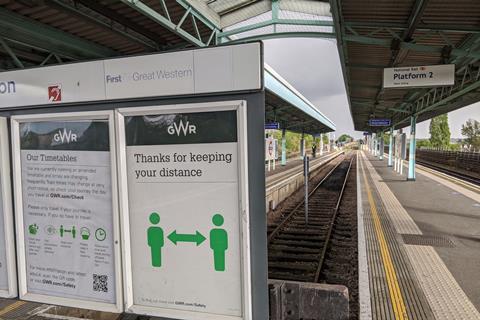
UK: Great Western Railway has invited expressions of interest in trialling a battery powered train on the 4 km non-electrified branch line from West Ealing to Greenford in west London.
The operator notes that the trial ‘will support the objectives of the Traction Decarbonisation Network Strategy and will be delivered with the support of Network Rail and the Department for Transport’.
GWR is seeking to lease one trainset and associated charging equipment for the trial, which would initially run for one-year from April 1 2022. An extension to March 2025 is envisaged if performance criteria are met.
Light maintenance would be carried out by GWR at West Ealing EMU sidings, with heavy maintenance the responsibility of the chosen supplier.
With preparatory work required before services can begin, it is expected that the contract will be let in time for work to commence in December 2021.
Fast charging
The Greenford branch is currently worked in driver-only operation mode by a two-car Class 165 Turbo DMU which normally operates 33 round trips totalling 264 km per day, with a maximum line speed of 65 km/h and a timetabled journey of 12 min.
The half-hourly service involves quick turnarounds at each terminus, and the trial specifically calls for the use of fast charging equipment. This would be installed in the bay platform at West Ealing, with the supplier responsible for maintenance.
Vivarail has previously proposed a fast-charge version of its Class 230 multiple unit, using third and fourth rails at charging points to recharge batteries at a fast rate using very high currents. These rails would only be energised once a train is over them, and the trains would be fitted with carbon ceramic shoes to cope with the heat generated.
The fast charge system would be fed from a bank of repackaged second-use batteries on continuous trickle charge from the grid. Vivarail says that enough power for a 95 km journey could be transferred in 7 min, meaning that on many routes a charge would not be needed every time the train calls.
It is understood that discussions are underway with a number of other manufacturers who are also expected to express an interest in the project. One senior industry source told Rail Business UK that ‘there are some who have got trains that they could convert to battery and there are one or two who might propose new battery trains. There are more companies that have already got something than people might imagine.’
Self-contained branches
Talking to Rail Business UK, GWR Managing Director Mark Hopwood said accidents of railway history mean that the majority of surviving short self-contained branch lines are on its network. In contrast, other operators have branches with services running into the main line, where batteries could be charged from conventional electrification.
‘The challenge on Great Western is we’ve got branches like Greenford, Windsor, Marlow and Henley along the Thames valley, and then in the West Country we’ve got St Ives, Falmouth, Newquay, Looe, Gunnislake and so on’, said Hopwood. ‘If we don’t electrify those could we fit the trains with a battery?’ The ideal solution may be a train that fast charges either at one end of the route or possibly at both ends, or on a route like Marlow, Gunnislake or Looe, where the trains reverse during their journey, could the charge point even be on that part of the branch?’



